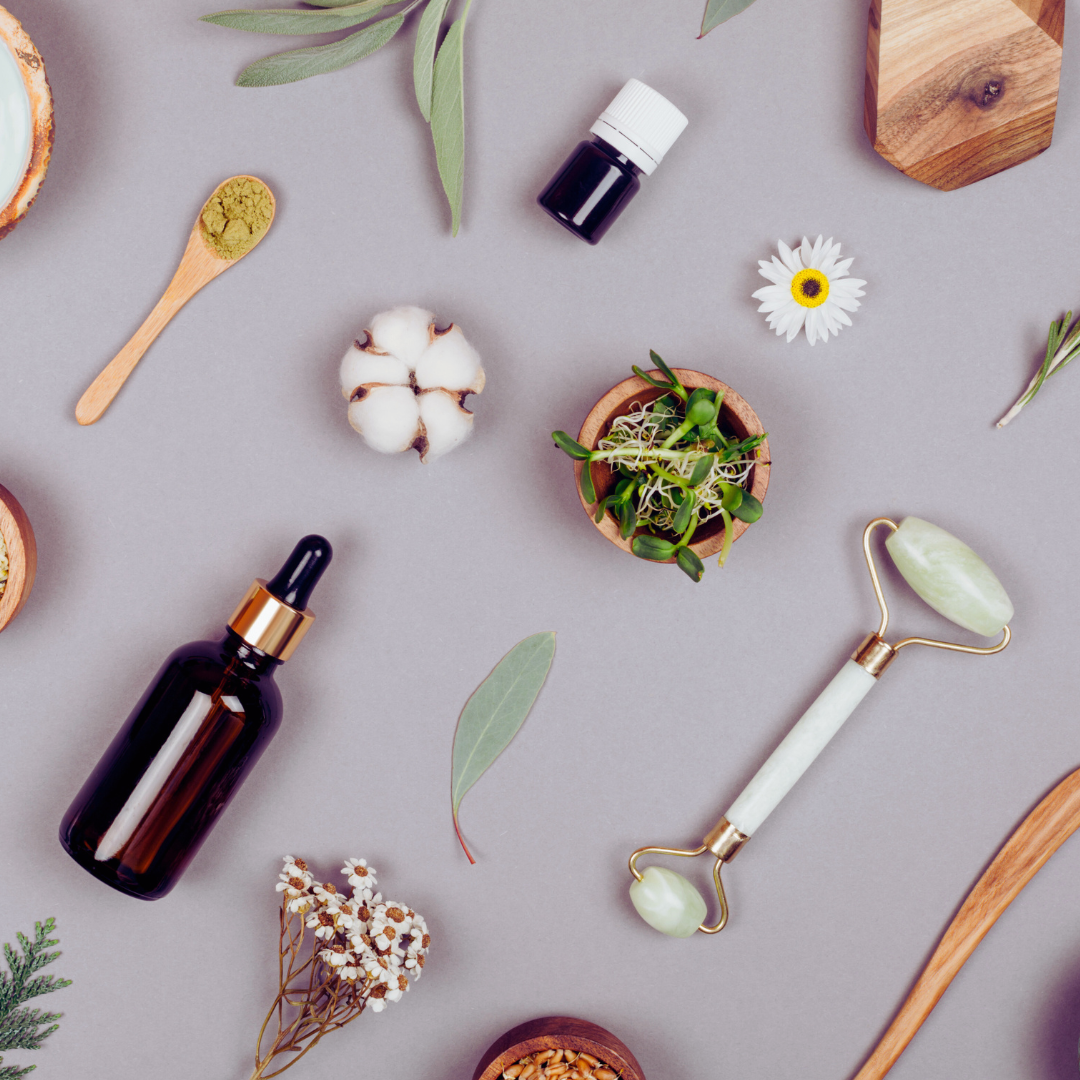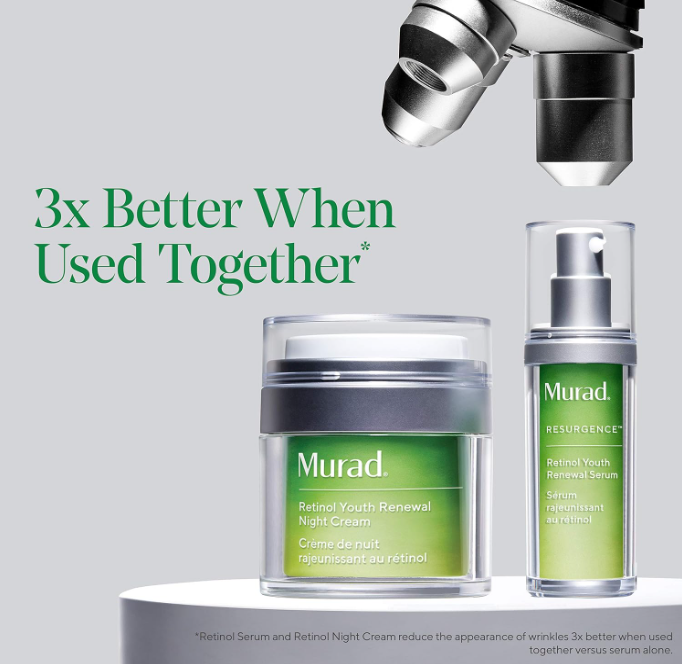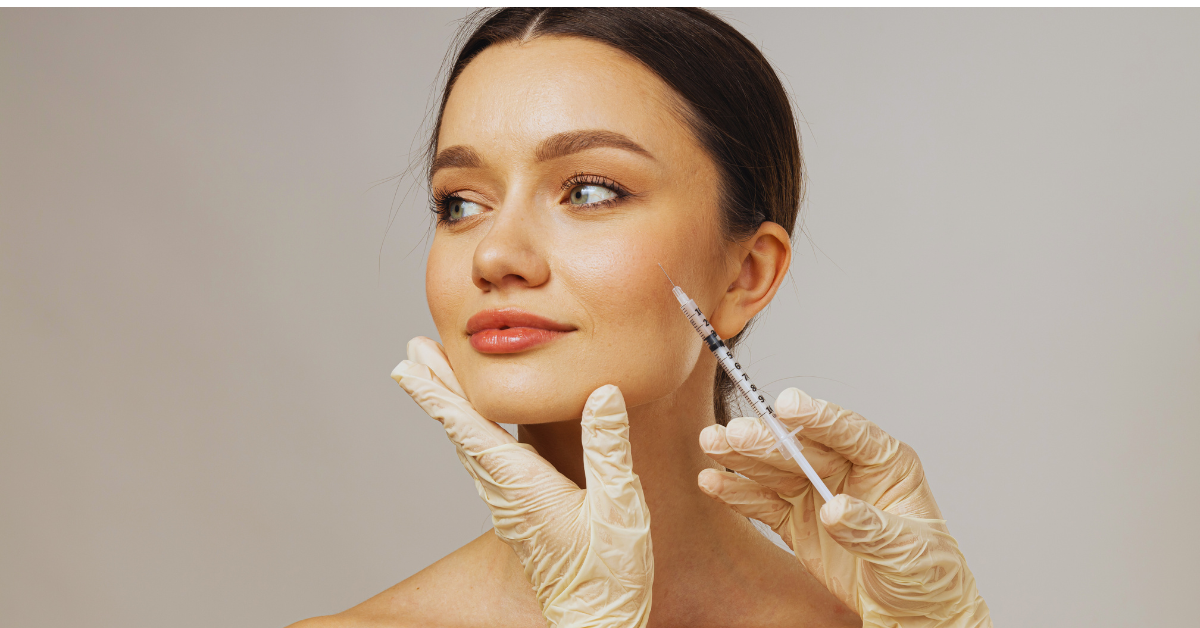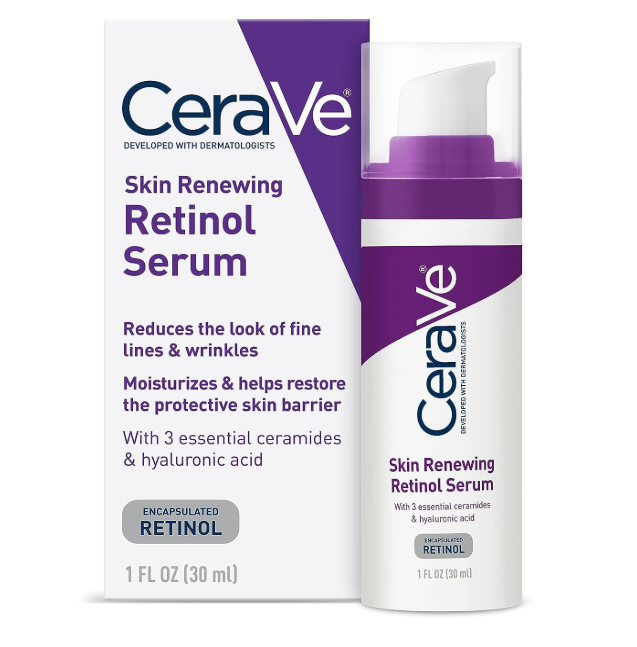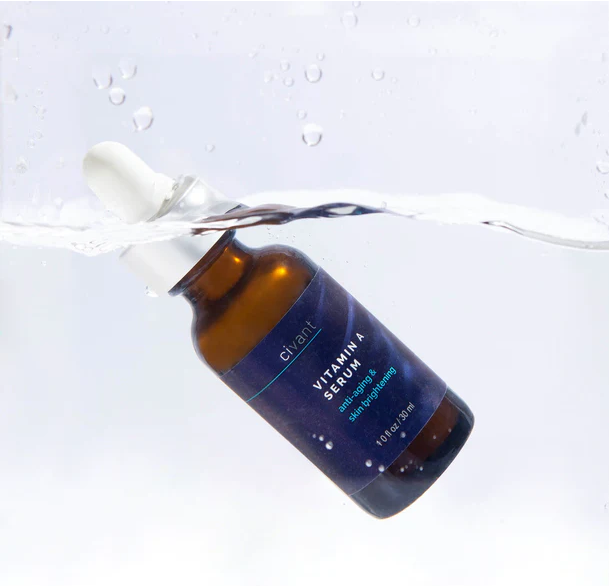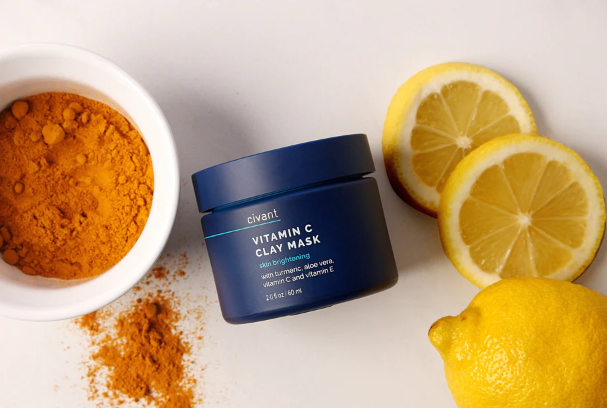As an Amazon Associate, I earn from qualifying purchases.
Aging is a natural part of life, yet many of us, especially women, often find ourselves searching for ways to maintain a healthy and youthful appearance as time goes on. While there’s no magic potion to stop the clock entirely, we can certainly slow it down by choosing the right skincare ingredients and avoiding those that may do more harm than good. With so many products on the shelves, it can be confusing to figure out which ones are worth trying and which to leave behind. This article aims to clear up the confusion by diving deep into the best anti-aging ingredients, explaining how they work, and identifying those you might want to avoid. By the end, you’ll have a comprehensive roadmap to help you achieve smoother, brighter, and more resilient skin.
We’ll explore the science behind some of the most popular anti-aging powerhouses like retinoids, peptides, vitamin C, and other nourishing components. We’ll also discuss why certain harsh chemicals, irritants, and potentially damaging substances are best left out of your skincare routine. Above all, this guide is designed for easy reading and practical application, so you can start making knowledgeable choices immediately. Think of this as your personal toolkit to address fine lines, wrinkles, dull skin, and other common signs of aging, using ingredients that truly deliver. Let’s begin by examining why our skin changes as we age, which will help explain the types of ingredients we need most.
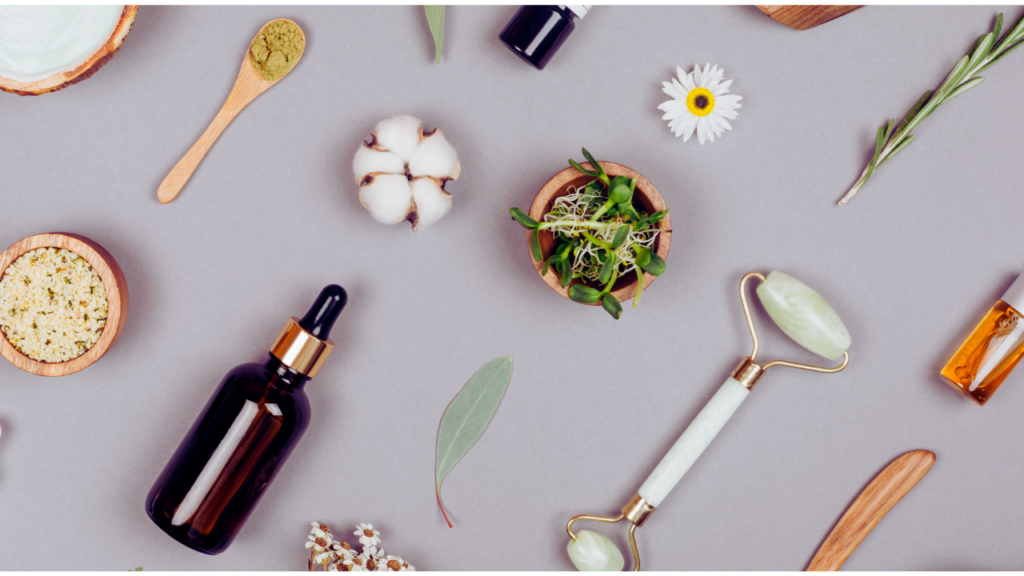
Why Our Skin Ages
Before exploring the best and worst ingredients, it’s beneficial to understand why our skin goes through these changes in the first place. Aging is a complex process influenced by multiple factors, including genetics, lifestyle choices (like diet and sun exposure), and environmental stressors (like pollution and temperature fluctuations).
Collagen and Elastin Loss
In our youth, our skin is rich in collagen and elastin, two proteins that give it its plumpness and snap-back elasticity. As we age, our bodies gradually produce less collagen and elastin, making our skin thinner and more prone to sagging and wrinkles. This decrease can be accelerated by factors like UV damage, smoking, and poor nutrition.
Decreased Cell Turnover
Another significant factor is the slowing down of our skin’s cell turnover rate. When we’re young, our skin sheds dead cells and regenerates with new cells relatively quickly, helping us maintain a fresher look. But over time, this process slows, leading to an accumulation of dead skin cells on the surface, which can dull the complexion and emphasize lines.
Changes in Hydration
Youthful skin is typically well-hydrated, supported by natural oils and adequate moisture retention. As the years pass, our skin often becomes dryer because our oil-producing glands become less active. Our skin barrier can weaken, allowing more moisture to escape. This dryness can make wrinkles appear more pronounced.
External Stressors
Sun exposure remains one of the largest culprits for premature aging. Excessive ultraviolet (UV) radiation breaks down collagen fibers and interferes with the normal repair mechanisms of the skin, leading to uneven pigmentation, fine lines, and deeper wrinkles. Pollution, blue light from screens, and temperature extremes can also accelerate visible aging if we don’t take protective measures.
With these factors in mind, let’s move on to the anti-aging heroes—ingredients backed by research and praised by dermatologists. We’ll then highlight several substances that may irritate or damage aging skin, setting you back from your skincare goals.
The Best Anti-Aging Ingredients
Retinoids (Retinol, Tretinoin, Retinaldehyde)
Retinoids are often hailed as the gold standard of anti-aging for a simple reason: they work. Retinoids, which include retinol (commonly found in over-the-counter products) and tretinoin (a prescription option), are derivatives of vitamin A. They help increase cell turnover, stimulate collagen production, and reduce the appearance of wrinkles and fine lines.
How They Work:
- Cell Turnover: Retinoids encourage the shedding of old, dead skin cells and the emergence of new, healthy ones. This process can help fade age spots, pigmentation, and even out skin tone over time.
- Collagen Stimulation: By boosting collagen synthesis, retinoids can gradually plump the skin and reduce the appearance of fine lines and wrinkles.
- Improved Texture: The skin often becomes smoother and more even in texture, due to the resurfacing effect.
Tips for Use:
- Retinoids can be potent, so start slowly if you’re new to them. Use them every other night or even once a week, and watch for signs of irritation.
- Always follow with a broad-spectrum sunscreen during the day. Retinoids can make your skin more photosensitive.
- A pea-sized amount for the entire face is usually enough. Too much can cause redness, dryness, or flaking.
Vitamin C (L-Ascorbic Acid and Derivatives)
Vitamin C is another superstar in the anti-aging toolkit. Renowned for its antioxidant qualities, vitamin C helps protect skin cells from damage caused by free radicals—those unstable molecules that can degrade collagen. By neutralizing free radicals, vitamin C slows down visible aging and improves the skin’s brightness.
How It Works:
- Antioxidant Protection: Neutralizes free radicals produced by UV rays or pollution, preventing oxidative stress that leads to collagen breakdown.
- Collagen Booster: Stimulates the production of new collagen, aiding in firming the skin and minimizing fine lines.
- Brightening Agent: Helps fade hyperpigmentation, dark spots, and post-inflammatory marks, leading to a more even tone.
Tips for Use:
- Opt for stable formulas (like ascorbyl palmitate or magnesium ascorbyl phosphate) if your skin is sensitive to traditional L-ascorbic acid.
- Store your vitamin C product in a cool, dark place. Prolonged exposure to heat and light can reduce its potency.
- Apply vitamin C serum in the morning under sunscreen for an added layer of protection against environmental damage.
Peptides
Peptides are small chains of amino acids that serve as building blocks for proteins like collagen and elastin. When applied topically, certain peptides can send signals to your cells, reminding them to ramp up collagen production.
How They Work:
- Signal Transmission: Certain peptides “tell” your skin to produce more collagen or repair damaged tissue, thereby improving firmness and elasticity.
- Skin Barrier Support: Some forms, such as ceramide-containing peptides, can help maintain a healthy skin barrier, locking in moisture and warding off irritants.
- Synergistic Effect: Often used in combination with other skincare ingredients to maximize anti-aging benefits without a high risk of irritation.
Tips for Use:
- Peptides are generally gentle and suitable for daily use.
- They’re often found in serums and moisturizers, so they can easily fit into your existing routine.
- Look for multi-peptide blends for more comprehensive results.
Niacinamide
Niacinamide, or vitamin B3, is a powerhouse ingredient that’s praised for its ability to target multiple skin concerns. From fine lines to enlarged pores, and from dullness to redness, niacinamide can tackle a variety of issues related to aging and overall skin health.
How It Works:
- Supports the Skin Barrier: Enhances the skin’s protective barrier by boosting natural lipids, helping to lock in moisture and defend against pollutants.
- Regulates Oil: Helps balance sebum production, which can be especially helpful if you have combination or oily skin.
- Brightening Properties: Reduces the appearance of hyperpigmentation and uneven tone over time.
- Anti-Inflammatory Effect: Calms redness and sensitivity, making it ideal for those prone to irritation.
Tips for Use:
- Niacinamide is typically well-tolerated. You can use it once or twice a day.
- Look for serums with 2% to 5% niacinamide for daily maintenance; higher percentages may be better for tackling more stubborn concerns.
Hyaluronic Acid
If dryness and loss of plumpness are your main concerns, hyaluronic acid (HA) should be on your radar. HA is a naturally occurring substance in the body that can hold many times its weight in water, making it a stellar hydrator.
How It Works:
- Superior Hydration: HA molecules attract and retain moisture, providing an immediate plumping effect.
- Smoother Appearance: Well-hydrated skin appears firmer, with fewer visible fine lines.
- Flexible Application: Available in serums, creams, and even facial mists, making it easy to incorporate into any routine.
Tips for Use:
- Apply HA on damp skin and seal with a moisturizer to prevent water loss.
- Low molecular weight HA can penetrate deeper, so consider looking for that if you want more intensive hydration.
Alpha Hydroxy Acids (AHAs) and Beta Hydroxy Acids (BHAs)
Exfoliation is crucial for encouraging the turnover of skin cells and keeping a radiant complexion. AHAs (like glycolic acid and lactic acid) and BHAs (like salicylic acid) help remove dead skin cells from the surface, revealing fresher skin.
How They Work:
- AHAs: Water-soluble, excellent for surface exfoliation and promoting an even tone. Glycolic acid, for instance, is known for its ability to penetrate well. Lactic acid is gentler but still effective.
- BHAs: Oil-soluble, perfect for unclogging pores and reducing blackheads and breakouts. Salicylic acid is the most common BHA.
- Texture Smoothing: Regular use of acids can soften the look of fine lines and wrinkles, while also improving skin texture and tone.
Tips for Use:
- Start with a low concentration to gauge your skin’s reaction, especially if you’re new to chemical exfoliants.
- Use them at night and apply sunscreen during the day since exfoliation can make the skin more UV-sensitive.
- Avoid over-exfoliating; two to three times a week is often enough.
Ceramides
Ceramides are fatty acids that make up over half of our skin’s outer layer. They are crucial in maintaining the skin’s barrier function. As we age, ceramide levels deplete, leading to dryness, irritation, and vulnerability to external pollutants.
How They Work:
- Barrier Reinforcement: Ceramides fortify the outer layer of the skin, trapping moisture inside and keeping irritants out.
- Reduction in Sensitivity: A stronger barrier can reduce redness and sensitivity, common issues in mature skin.
- Smoother Surface: When the skin barrier is intact, the surface feels softer and less prone to roughness or flaking.
Tips for Use:
- Look for moisturizers labeled “ceramide-rich” or “contains ceramides.”
- Pair ceramides with other hydrating ingredients like hyaluronic acid for optimal results.
- They’re gentle enough for daily use and especially beneficial in colder, drier climates.
Ingredients to Be Cautious About (and Often Avoid)
While there are countless beneficial ingredients, some can be harsh, especially for mature skin. Others simply don’t align with the goal of preserving youthful skin, either by causing inflammation, dryness, or overall stress to the skin. Let’s identify a few common culprits you might find in skincare products.
Harsh Physical Exfoliants
The idea of a good scrub can sound appealing—who doesn’t want to slough off dead skin and reveal a fresh complexion? But harsh physical exfoliants, like those containing large, coarse particles (for example, ground nutshells or seeds), can create micro-tears in the skin.
Why They’re Problematic:
- Micro-Trauma: Repeated scrubbing can lead to irritation, redness, and small wounds that weaken the skin’s barrier.
- Inflammation: Over time, this inflammation can contribute to more pronounced signs of aging.
- Alternatives: Instead, choose gentler physical exfoliants like micro-fine rice powder or opt for chemical exfoliants such as AHAs or BHAs.
High Alcohol Content
Alcohol in skincare products can serve as a preservative or help ingredients penetrate, but it can also dry out the skin if present in high concentrations.
Why It’s a Problem:
- Dehydration: Alcohol strips the skin of its natural oils, potentially disrupting the barrier and exacerbating dryness and wrinkles.
- Irritation: This can lead to redness and sensitivity, especially on mature skin.
- Reading Labels: Look for terms like “denatured alcohol” high on the ingredient list, and consider choosing alcohol-free or low-alcohol alternatives.
Synthetic Fragrances
A pleasing scent can make skincare feel luxurious, but added fragrances can lead to unwanted reactions in many people, especially those with sensitive or aging skin.
Why They’re Problematic:
- Allergic Reactions: Fragrances, both synthetic and natural essential oils, are a leading cause of contact dermatitis.
- Sensitizing: Fragrance can sensitize the skin over time, leading to chronic irritation and inflammation.
- Choosing Wisely: If scent is important, look for products labeled “fragrance-free” or “hypoallergenic,” or try to pick items with low-fragrance formulations.
Parabens (and Certain Preservatives)
Parabens are a group of chemicals commonly used as preservatives to extend the shelf life of cosmetic products. While the scientific community debates their safety, some consumers prefer to avoid parabens due to concerns about potential hormone disruption.
Why People Avoid Them:
- Hormonal Concerns: Parabens have been found to mimic estrogen in some lab settings, though conclusive evidence in humans is still under investigation.
- Sensitivity: Some individuals experience irritation or allergic reactions to parabens.
- Alternatives: Many brands now use alternative preservatives or go “paraben-free,” which can be appealing to those who prefer a more natural or cautious approach.
Sulfates
Sulfates, such as sodium lauryl sulfate (SLS) and sodium laureth sulfate (SLES), are foaming agents often found in cleansers and shampoos.
Why They’re Problematic:
- Stripping Effect: They can remove too much oil from the skin, compromising the skin barrier and leading to dryness.
- Irritation: Sulfates can irritate sensitive or mature skin, resulting in redness or itchiness.
- Choosing Gentle Cleansers: Look for sulfate-free options that clean without leaving skin tight or squeaky.
Hydroquinone (When Overused or Without Supervision)
Hydroquinone is a potent ingredient used to lighten hyperpigmentation and even out skin tone. It can be effective, but improper or long-term use comes with risks.
Why Caution is Needed:
- Irritation and Sensitivity: Overuse can cause inflammation and redness, which may accelerate aging in the long run.
- Blue-Black Darkening: In some rare cases, excessive use can lead to ochronosis, a condition where the skin turns a blue-black color.
- Consult a Professional: If you’re considering using hydroquinone, it’s best done under professional guidance to minimize risks.
Excessive Essential Oils
Some natural or “clean” skincare brands rely heavily on essential oils for fragrance or purported benefits. While certain essential oils have therapeutic properties, many can be highly irritating.
Why They’re Problematic:
- Potent Allergens: Essential oils such as lavender, peppermint, or citrus oils can sensitize the skin, leading to reactions.
- Phototoxicity: Some, like certain citrus oils, can make your skin more susceptible to sun damage.
- Moderation or Alternatives: Small amounts in well-formulated products may not be harmful, but it’s wise to be cautious if you have sensitive skin.
Formulating a Skincare Routine With the Right Ingredients
Morning Routine (AM)
- Gentle Cleanse: Use a mild, sulfate-free cleanser to remove any overnight buildup without stripping your skin.
- Antioxidant Serum: Consider applying a vitamin C serum. This protects your skin from free radicals during the day and aids in brightening.
- Hydrate and Protect: Follow with a moisturizer containing ceramides or hyaluronic acid. This locks in hydration and reinforces the skin barrier.
- Sun Protection: End with a broad-spectrum sunscreen (SPF 30 or higher). Sunscreen is perhaps the most effective anti-aging tool you can use daily.
Evening Routine (PM)
- Double Cleanse (Optional): If you wear makeup or sunscreen, start with an oil-based cleanser, then follow with a gentle water-based cleanser.
- Targeted Treatments: Use retinoids or peptides. Retinoids can be applied once you’ve built up tolerance.
- Eye Cream: If needed, apply an eye cream with nourishing ingredients like peptides or niacinamide.
- Moisturize: Seal it all in with a ceramide-rich or peptide-infused night cream to support overnight repair.
Weekly Extras
- Exfoliation: Gently exfoliate with AHAs or BHAs one to three times a week to keep cell turnover healthy.
- Masking: Hydrating masks containing hyaluronic acid can offer an extra dose of moisture, especially during cooler months or whenever your skin feels parched.
Lifestyle Tips for Healthy, Youthful-Looking Skin
Prioritize Sun Protection
It can’t be emphasized enough: the sun is one of the biggest contributors to premature aging. Besides using sunscreen daily, consider wearing hats, sunglasses, and protective clothing when spending extended time outdoors. Seek shade whenever possible, and remember that even on cloudy days, UV rays can still damage the skin.
Nourish From Within
The expression “beauty starts from within” has some truth to it. A balanced diet rich in antioxidants, healthy fats, and proteins can support your skin’s natural regeneration process. Foods like avocados, berries, salmon, and leafy greens all contain nutrients that help maintain skin’s elasticity, hydration, and glow. Staying hydrated is equally important—water helps transport nutrients to cells and keeps skin looking plump.
Sleep and Stress Management
Quality sleep is vital for your overall health, and it plays a significant role in maintaining youthful skin. During rest, your body repairs and regenerates cells, including those in your skin. Chronic stress, on the other hand, can trigger inflammation, breakouts, and even accelerate the breakdown of collagen.
Limit Harmful Habits
Smoking is notorious for hastening the aging process. It depletes collagen and elastin, causing deeper wrinkles and a dull complexion. Excessive alcohol consumption can also lead to dehydration and inflammation. Enjoying these in moderation or avoiding them entirely helps keep skin looking and feeling healthier.
Common Myths and Misconceptions
“If It Stings, It Must Be Working”
A tingling or burning sensation is not always a sign that a product is effective. Sometimes it means you’re irritating your skin. A mild, brief tingle when using certain acids or retinoids can be normal, but persistent stinging or burning typically signals that the product is too harsh, or your skin’s protective barrier is compromised.
“Natural = Safe”
Just because something is derived from nature doesn’t automatically mean it’s gentle. Essential oils, for instance, may irritate the skin. Conversely, some synthetic compounds (like peptides) are both effective and safe. Instead of relying solely on labels like “natural,” “clean,” or “organic,” focus on ingredient quality and compatibility with your skin type.
“You Only Need Sunscreen in the Summer”
Harmful UV rays are present even on cloudy days and during the winter. UVA rays, responsible for long-term skin damage, can penetrate clouds and glass. Year-round sun protection is crucial for preventing photoaging, which is one of the main accelerators of visible aging in the skin.
“Thicker Products Are Always More Moisturizing”
While heavier creams may feel more nourishing, thickness doesn’t necessarily translate to deeper hydration. Formulation matters more than consistency. Look for products that contain proven moisturizers such as hyaluronic acid, ceramides, and fatty acids, rather than relying on a heavy texture alone.
Potential Side Effects to Watch Out For
Even some of the best anti-aging ingredients can cause side effects if not used properly. It’s important to pay attention to what your skin is telling you.
Irritation, Redness, or Dryness
These can occur when starting retinoids or AHAs/BHAs. If your skin seems overly irritated, scale back usage. Try applying every other day or even once a week until your skin builds tolerance. Consistent use of a gentle moisturizer and sunscreen can alleviate discomfort.
Sensitivity or Allergic Reaction
Symptoms like hives, intense itching, or swelling may indicate an allergic response. Discontinue use immediately if you suspect an allergy and consult a healthcare professional. Patch-testing new products on a small area of skin before applying them all over can help prevent widespread reactions.
Photosensitivity
Some ingredients, especially retinoids, make your skin more sensitive to the sun. This is one reason a broad-spectrum SPF should be part of your everyday routine. If you notice increased redness or sunburn, adjust your skincare routine or re-evaluate the frequency of retinoid use.
Building a Sustainable Routine: A Step-by-Step Guide
Step 1: Identify Your Skin Type
Understanding whether your skin is dry, oily, combination, or sensitive can guide you toward the right formulations. Mature skin can fall into any of these categories, so it’s crucial to tailor your products accordingly. For example, a retinol product designed for oily skin may have a lighter base, whereas those for drier skin often contain more emollients.
Step 2: Introduce One Active Ingredient at a Time
When starting an anti-aging regimen, it’s tempting to load up on multiple active ingredients—like retinol, vitamin C, and various acids—right away. However, jumping in too fast can overwhelm your skin, leading to irritation. Introduce one active product at a time, allow your skin to adjust, and then incorporate others gradually.
Step 3: Prioritize Quality and Compatibility
Not all brands and products are created equal. Look for reputable brands that use evidence-based formulations. Also, be mindful of how products interact. For instance, certain forms of vitamin C and retinol may clash if used at the same time, increasing the risk of irritation. Often, dermatologists recommend using vitamin C in the morning and retinol at night.
Step 4: Maintain Consistency
Skincare is not a “set it and forget it” process. Ingredients like retinol and vitamin C take time—often several weeks to a few months—to show visible improvements. Regular usage in a consistent routine is more beneficial than sporadic application. Alongside daily use, keep up with lifestyle measures like sun protection and a balanced diet.
Step 5: Reevaluate Periodically
As you age, your skin’s needs may change. Keep tabs on how your skin reacts to products and adjust your routine accordingly. If a product was once helpful but suddenly causes irritation, it might be time to switch formulas or reduce usage frequency.
The Emotional Side of Aging and Skincare
Aging isn’t just about the physical changes we see in our skin—it can also bring up a host of feelings, from anxiety over the loss of youthfulness to acceptance and pride in the wisdom that comes with age. It’s perfectly normal to want to take care of your appearance and feel confident in your skin. At the same time, be mindful of marketing claims that prey on insecurities. Skincare should be a form of self-care rather than a source of stress.
Feeling good about your routine can be part of a healthy lifestyle. Massage your serums and creams gently into your skin, making your daily regimen a relaxing ritual rather than a chore. Remember, your skin is an incredible organ that protects you throughout life. Treat it with kindness, understanding, and the best ingredients you can find.
In Summary: Balancing the Good With the Not-So-Good
Navigating the world of skincare can sometimes feel like a maze, but understanding the key components makes it more manageable. Anti-aging isn’t about denying your age; it’s about supporting your skin so it can look and feel healthy at every stage of life. Retinoids, vitamin C, peptides, niacinamide, hyaluronic acid, and ceramides are among the top ingredients to consider for a well-rounded regimen. They each address specific concerns—from boosting collagen to sealing in moisture, reducing inflammation, and evening out tone.
On the flip side, it’s wise to approach certain ingredients with caution. Harsh physical exfoliants can cause micro-tears and inflammation; high alcohol content can dry out mature skin; and synthetic fragrances or parabens can trigger sensitivity in some individuals. Sulfates, used for their foaming abilities, may strip away the skin’s natural oils, while hydroquinone and certain essential oils require careful use to avoid adverse effects.
Of course, the most effective skincare routine also includes steps beyond topical products. Sun protection should be the backbone of any anti-aging plan, along with a balanced diet, sufficient hydration, and good sleep hygiene. Moderation in habits like smoking and alcohol consumption is equally essential for preserving skin health.
When building or refining your skincare routine, take the time to research and understand each product’s ingredients. Start slowly with potent actives like retinoids, especially if your skin is sensitive or prone to dryness. Consistency and patience are key, as visible transformations rarely occur overnight. Keep in mind that a healthy skin barrier is the foundation upon which all anti-aging efforts rest. As you incorporate more powerful actives, balance them with nourishing moisturizers and gentler treatments.
Finally, remember that skincare is personal. What works wonders for one individual may not necessarily be ideal for another. Pay attention to how your skin responds, and don’t be afraid to adjust your routine accordingly. Consulting a dermatologist can be helpful if you’re dealing with persistent or severe skin issues, as they can recommend prescription-strength ingredients and tailor advice to your needs.
Aging is an inevitable journey, but you have control over how you nurture and maintain your skin along the way. By focusing on proven ingredients and staying away from those that contribute to dryness, inflammation, or hypersensitivity, you’re setting yourself up for a lifetime of healthy, radiant skin. Celebrate your skin for all it’s done and continues to do for you, and choose products wisely so you can look in the mirror and feel both youthful and empowered at every age.
Does Murad Retinol Youth Renewal Serum Work? | Skincare Review | Anti-Aging
As an Amazon Associate, I earn from qualifying purchases. What is the Murad Retinol Youth Renewal Se…
What Are Dermal Fillers? Find Out About The Benefits And Risks
As an Amazon Associate, I earn from qualifying purchases. For many women (and men), achieving a fres…
What Are The Best Anti Aging Ingredients? Find Out Which Work And Which To Avoid…
As an Amazon Associate, I earn from qualifying purchases. Aging is a natural part of life, yet many …
CeraVe Anti-Aging Retinol Serum Review | Skincare Review
As an Amazon Associate, I earn from qualifying purchases. What is the CeraVe Anti-Aging Retinol Seru…
Vitamin A Serum By Civant Skincare – Skincare Review | Anti Aging
As an Amazon Associate, I earn from qualifying purchases. What is the Vitamin A Serum? Civant Skinca…
Vitamin C Clay Mask By Civant Skincare – Product Review | Anti Aging
As an Amazon Associate, I earn from qualifying purchases. Civant Skincare has gained a reputation fo…

